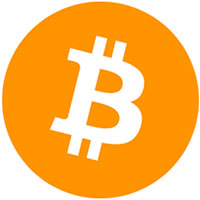Chainlink aims to bring interoperability to blockchain by facilitating the seamless flow of real-world data to cryptocurrency networks. As the cryptocurrency market continues to grow and evolve, so too does the number of trading opportunities available to traders. Recently, one of the most talked about opportunities has been Chainlink (LINK), a decentralised oracle network that allows for data exchange between blockchain networks and external sources.
Read on to learn everything you need to know to get started with trading Chainlink, from it's history, advantages and disadvantages, to how you can buy and trade it using crypto CFDs.
What is Chainlink and how does it work?
Chainlink is a protocol that enables smart contracts to interact securely with off-chain data sources through the use of decentralised oracles. Due to the strong security properties brought about by distributed consensus mechanisms, blockchain networks are unable to natively push or pull data from off-chain or external sources. For smart contracts to reach their full potential, they require off-chain data integration to execute actions once certain ‘conditions’ are met.
A decentralised oracle (or blockchain oracle) is middleware that enables crypto networks to communicate with off-chain systems, such as external data feeds, digital payment methods, and events.
To put it simply, Chainlink acts as a bridge between blockchain networks and external data sources. Decentralised oracles serve smart contracts by providing them with data from off-chain sources or connecting them with an off-chain system. These oracles work within the confines of a decentralised oracle network to aggregate several data points to form a single trusted data point, which can be used to trigger smart contracts on any blockchain.
Chainlink is composed of several decentralised oracle networks running simultaneously and independently of each other.
You can access the Chainlink network by downloading a cryptocurrency wallet compatible with the network’s native digital asset, called LINK. You can purchase LINK from a cryptocurrency exchange or buy and sell Chainlink CFDs on a trading platform.
Why has Chainlink become so popular in recent years?
Chainlink’s popularity has grown tremendously since its mainnet launch in May 2019, securing a total of $75 billion in value by the end of 2021. Chainlink integrations now feed into thousands of DeFi applications across multiple blockchains, providing an essential service to the global DeFi ecosystem.
The growth in Total Value Secured (TVS) has been spurred by the proven security and reliability of the Chainlink oracle networks, and the diverse data being aggregated and consumed by on-chain applications to secure user funds.
Currently, there are over 700 decentralised oracle networks live in production, pushing data across numerous independent networks.
The Chainlink ecosystem now includes 1,000+ projects that feed into more than a billion individual data points that have been delivered on-chain to date. The Chainlink network powers leading DeFi applications such as Aave, Synthetix, and Yearn. Chainlink has also attracted several leading enterprises, including AccuWeather, Amazon, and Google Cloud, to integrate into the network as data providers.
When was Chainlink created?
Chainlink was founded in 2017 by a company called Chainlink Labs. This was preceded by a company called SmartContract from 2014, which aimed to connect smart contracts to external data and open the way for the development of Chainlink Labs.
In April 2021, the Chainlink Labs team published a whitepaper detailing the evolution of the protocol to Chainlink 2.0.
Who invented Chainlink?
Chainlink was invented by Sergey Nazarov and Steve Ellis. Sergey Nazarov co-founded CryptaMail, a blockchain-based email service in 2014. He later teamed up with Steve Ellis in 2014 to begin SmartContract, which would eventually lead to the birth of Chainlink Labs in 2017.
Steve Ellis was previously a software engineer at Pivotal Labs and a co-founder at Secure Asset Exchange, a company providing secure messaging and decentralised data storage.
Chainlink is an open-source project that has numerous contributors to the development of the protocol core client on SmartContract GitHub.
How does the Chainlink network validate transactions?
Chainlink is secured by a proof-of-stake (PoS) consensus mechanism. Unlike the proof-of-work (PoW) consensus used by Bitcoin, PoS relies on the amount of staked tokens to select network validators, and validate transactions.
Significantly, LINK is an ERC-20 utility token that has an extra ERC-223 function that facilitates interaction with smart contracts.
Under a PoS system, you can stake your LINK tokens to verify transactions and add them into the Chainlink network. In exchange, for any transaction block you validate, you earn LINK tokens as a reward. The Chainlink PoS protocol chooses a validator node to validate transactions based on how many LINK tokens are staked in the network.
Chainlink price history
Since its launch in 2017, the price of LINK has oscillated between several highs and lows.
Let’s take a look at the most important LINK price milestones over the years:
- 2017: The price of LINK at the September ICO was below $1, with over 300 million LINK tokens being sold.
- 2018: LINK crossed the $1 mark in January and then hovered around a $0.17 support level for the rest of the year.
- 2019: The LINK token listed on Coinbase in June and almost quadrupled in price to trade at around $3.53 by the end of June.
- 2020: The Chainlink token’s price gained steadily during this period, pushed by its growing community as it partnered and released new features. LINK rallied to trade above $8 in July and peaked at above $19 in mid-August.
- 2021: The price of LINK rallied to peak at above $50 by mid-May as part of the overall crypto bull market. The price retraced to around $13 in July but managed to close the year at around $23.
What is the market capitalisation of Chainlink?
Chainlink has a market capitalisation of $7,219,259,273 as of January 25, 2022. The cryptocurrency has a max supply of 1,000,000,000 LINK tokens and a circulating supply of 467,009,549 LINK.
You can view LINK transactions and the comparable wallet addresses using block explorers, such as etherscan.io, bscscan.com, ftmscan.com, blockscout.com, and explorer.solana.com.
All LINK transactions are broadcast on public networks. You can view transactional volumes, timestamps, and destination wallet addresses.
Let's look at how you can buy, trade, and invest in Chainlink.
How to trade Chainlink (LINK)
Trading Chainlink allows you to speculate on the volatility of the LINK token. Chainlink traders can buy and sell LINK using crypto CFDs on a brokerage like Axi.
To trade Chainlink, follow these steps below:
- Research on Chainlink’s recent and historical price movements.
- Formulate your own LINK trading strategy.
- Choose a cryptocurrency exchange or trading platform to trade LINK.
- Fund your account using fiat currency or cryptocurrency.
- Implement your Chainlink trading strategy.
- Track and monitor your portfolio to optimise your trading strategy.
How to invest in Chainlink (LINK)
Chainlink is now a popular digital asset and investing in it offers you a chance to diversify your crypto portfolio. You can invest in Chainlink by buying LINK tokens from a cryptocurrency exchange and then securely storing them in an offline cold wallet to ensure utmost security.
How to buy Chainlink (LINK)
To purchase LINK, you will need a Chainlink-compatible wallet, a trusted cryptocurrency exchange, and fiat currency to convert into LINK tokens.
Proceed to set up your Chainlink wallet and find a cryptocurrency exchange that supports fiat payments and your preferred mode of payment. Follow the steps to buy LINK:
- Register on a cryptocurrency exchange.
- Fund your account with fiat currency.
- Create an order to buy LINK with the amount you’d like to invest.
- Upon order fulfillment, your exchange wallet will be credited with LINK tokens.
- Transfer your LINK tokens to a personal wallet.
How to store LINK
You can store your LINK tokens in a crypto wallet. A crypto wallet can either be accessed online or stored on a physical device. Wallets can further be classified into hot or cold wallets. A hot wallet enables you to access your LINK tokens online while cold wallets store your cryptocurrency offline.
To securely store your LINK, follow the below steps:
- Once you have purchased LINK, choose what type of wallet you prefer.
- If you plan to trade your LINK tokens, then you can download a hot wallet. Examples of a hot wallet include Trust Wallet or MetaMask.
- Alternatively, if you plan to invest in LINK and “HODL” the cryptocurrency, you can buy cold wallets such as Trezor and Ledger.
- Transfer your LINK tokens to your choice of wallet (after you have backed your waller up securely).
- Store your tokens securely in your wallet until you decide to sell them.
Advantages of Chainlink
Discover the advantages and disadvantages of Chainlink below:
- Security: Chainlink allows seamless and secure interactions between smart contracts and off-chain data sources.
- Cross-chain interoperability protocol (CCIP): The CCIP provides a platform for cross-chain communication that enables smart contracts to communicate across public and private blockchains.
- Financial incentives: Decentralised oracles, node operators, and other data providers can earn LINK tokens for their contribution to the Chainlink ecosystem
- Confidence: Enterprise partnerships and integrations with organisations such as Amazon, AccuWeather, Google Cloud and more build confidence among investors and other project supporters
- Potential returns: With strong on-chain metrics, the demand for Chainlink services may push up the price of LINK cryptocurrency and create a windfall for token holders.
Disadvantages of Chainlink
- Volatility: The price of LINK is subject to market pressure and can rise and fall in price substantially. This can make it a risky investment for novice traders.
- Lack of brand awareness: While crypto-savvy investors are largely aware of Chainlink and its essential role in the DeFi landscape, LINK doesn’t benefit from strong brand recognition like Bitcoin or Ethereum do.
What price is LINK expected to reach?
Making cryptocurrency price predictions is a tricky affair, given the volatility of the crypto markets. According to Wallet Investor, an algorithm-based forecasting site, the price of LINK could rally to $33 by mid-November and finally settle at around $30 by the end of 2022. Conversely, a technical price analysis from DigitalCoin suggests LINK could average $21 in 2022.
Chainlink has bright prospects in 2022. With the ongoing developments happening within the LINK ecosystem, as well as the overall crypto market, the price of LINK may rise to new heights and even surpass its all-time high of $52.20.
However, like all altcoins, the performance of LINK will be primarily driven by how Bitcoin and the rest of the crypto market performs.

















